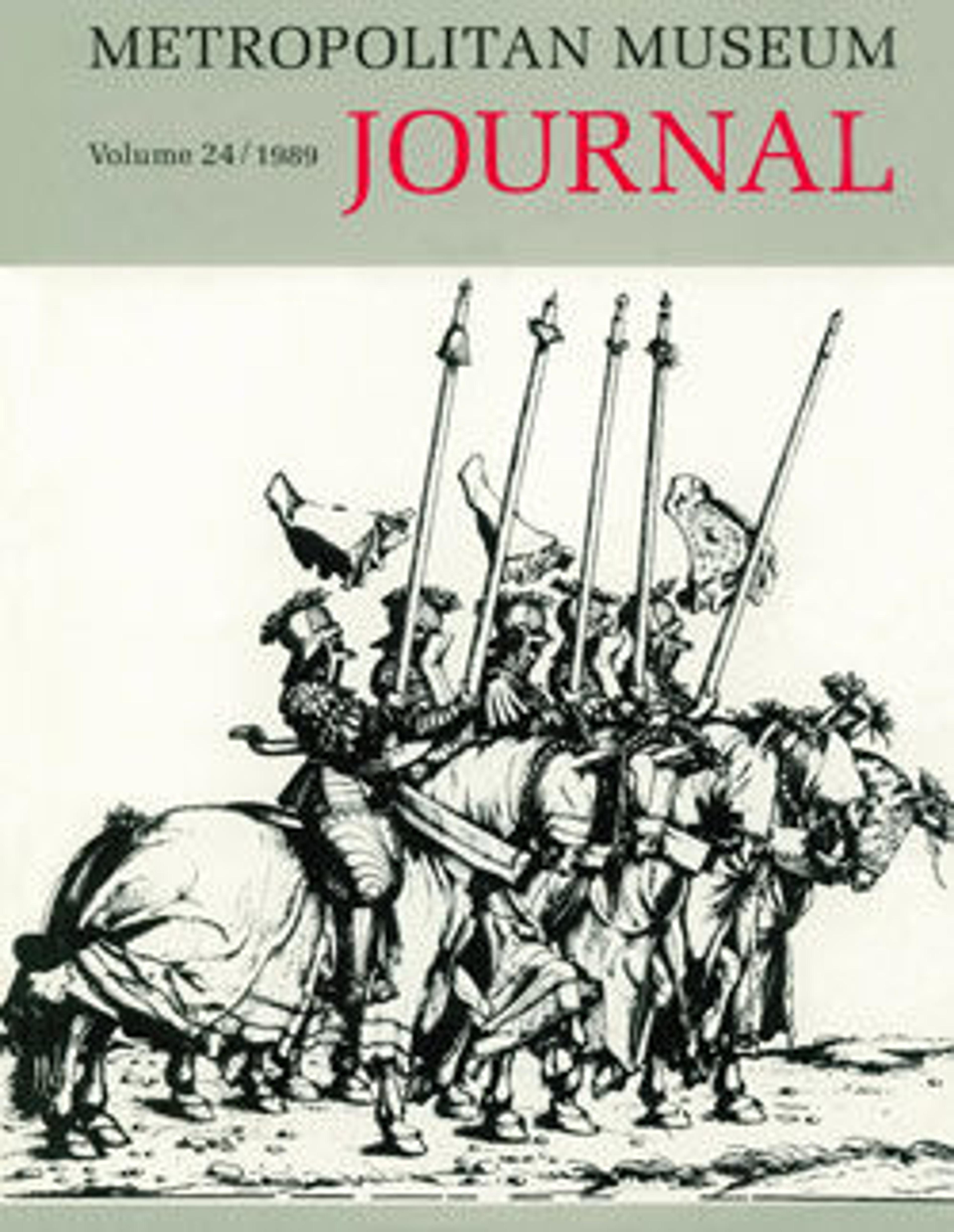Sallet
Armor was made in southern Germany and Austria, areas rich in iron ore, since the early Middle Ages. By the fifteenth century, the armorers of this region had achieved an international reputation that rivaled the fame of their counterparts in northern Italy. Augsburg, Landshut, Nuremberg in Germany, and Mühlau and nieghboring Innsbruck in Austria were the major armor-producing centers. Their armorers could equip entire armies while also fulfilling personal commissions for the nobility throughout western Christendom. The patronage of the upper nobility spurred the leading armorers to develop technical innovations and decorative styles that set international standards of quality and beauty. Emperor Maximilan I (1459–1519) employed dozens of armorers to make battle and tournament armors for his personal use and as imperial gifts. Chief among these armorers was Lorenz Helmschmid (about 1445–1516) of Augsburg, possibly the most talented German armorer of the late fifteenth to early sixteenth century.
Artwork Details
- Title:Sallet
- Date:ca. 1500–1510
- Culture:German
- Medium:Steel, copper alloy
- Dimensions:H. 10 1/2 in. (26.7 cm); W. 8 5/8 in. (21.9 cm); D. 12 1/8 in. (30.8 cm); Wt. 5 lb. 7 oz. (2461 g)
- Classification:Helmets
- Credit Line:Bashford Dean Memorial Collection, Bequest of Bashford Dean, 1928
- Object Number:29.150.4a
- Curatorial Department: Arms and Armor
More Artwork
Research Resources
The Met provides unparalleled resources for research and welcomes an international community of students and scholars. The Met's Open Access API is where creators and researchers can connect to the The Met collection. Open Access data and public domain images are available for unrestricted commercial and noncommercial use without permission or fee.
To request images under copyright and other restrictions, please use this Image Request form.
Feedback
We continue to research and examine historical and cultural context for objects in The Met collection. If you have comments or questions about this object record, please contact us using the form below. The Museum looks forward to receiving your comments.
